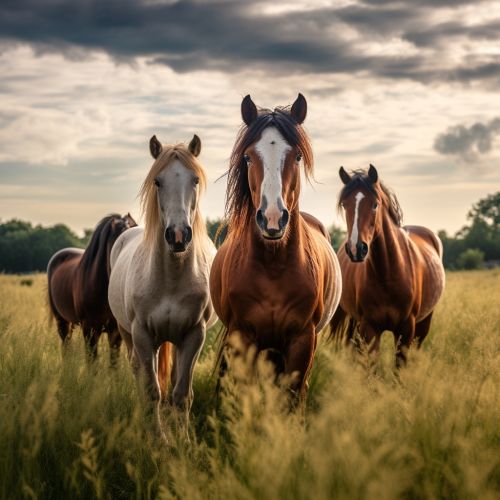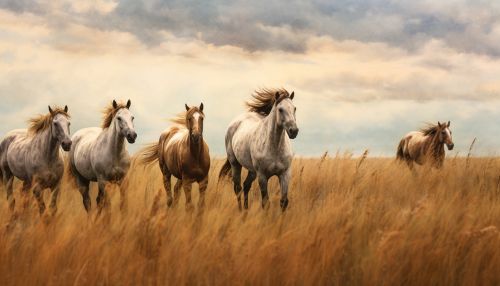Equidae
Taxonomy and Evolution
The family Equidae belongs to the order Perissodactyls, also known as odd-toed ungulates. This family includes modern horses, zebras, and asses, as well as their extinct relatives. Equidae is the only surviving family of the once diverse and populous superfamily Equoidae.


The evolution of the Equidae family is a fascinating journey through time, starting with small, multi-toed creatures and ending with the large, single-toed animals we know today. The first equids appeared during the Eocene epoch, around 55 million years ago. These early equids, such as Hyracotherium, also known as Eohippus, were small, forest-dwelling animals with multiple toes on each foot.
Over millions of years, equids adapted to changing environments, leading to the emergence of different genera and species. During the Miocene epoch, around 23 to 5.3 million years ago, equids diversified into two main lineages: the browsing "hipparions" and the grazing "equines". The latter group eventually gave rise to the modern genus Equus, which includes horses, zebras, and asses.
Anatomy and Physiology
Equidae are characterized by their long legs, which are adapted for speed. They are unique among mammals in having only one toe on each foot, a feature that evolved to reduce weight and increase running efficiency. The single toe is encased in a hard hoof, which protects the foot and provides traction.
Equids have a well-developed sense of balance, thanks to their large, mobile ears and sensitive whiskers. Their eyes are positioned on the sides of their head, giving them a wide field of vision. They also have a highly developed sense of smell and hearing.
The digestive system of equids is adapted to a herbivorous diet, with a large cecum that allows for the fermentation of plant material. They have a high metabolic rate and require a substantial amount of food to maintain their energy levels.
Behavior and Ecology
Equidae are social animals, typically living in groups called herds. Herd composition can vary, but most often consists of a single adult male, several adult females, and their offspring. Adult males, or stallions, defend their herd from rival males.
Equids are primarily grazers, feeding on a variety of grasses, although they will also consume leaves, fruits, and bark. They have a unique feeding strategy, known as "bulk and selective feeding", which allows them to consume large quantities of low-quality forage, as well as selectively feed on higher-quality plants.
Equids play a significant role in their ecosystems. As grazers, they help to control vegetation growth and contribute to the cycling of nutrients. They are also prey for a variety of predators, including lions, wolves, and hyenas.
Conservation and Human Interaction
Many species within the Equidae family are threatened or endangered, primarily due to habitat loss and hunting. Conservation efforts for these species often involve habitat protection and restoration, as well as captive breeding programs.
Humans have had a long and complex relationship with equids. Horses were first domesticated around 5,500 years ago, and have since been used for transportation, work, and companionship. Zebras and asses have also been used by humans, although to a lesser extent.
